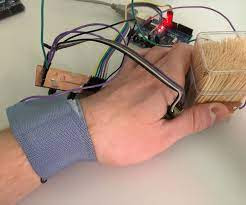Biofeedback Measurement Instruments Help To Control Body Functions and To Make Subtle Changes in the Body
Biofeedback measurement is one of the most important procedures and tools in modern times that is used to obtain information about psychophysiological or mind-body interactions and “feeding it back” for training. Biofeedback measurement instruments have been used widely in all sorts of training and industrial applications and is now also finding application in many medical practices.
Biofeedback
can be used in stress management especially during the Covid-19 pandemic. In
the U.S., from 3 January 2020 to 4:13pm CEST, 13 April 2021, there have been
30,888,765 confirmed cases of COVID-19 with 556,853 deaths. During a
biofeedback measurement, a computer is used to provide instructions to a
trained individual, usually a therapist or doctor. These instructions are based
on knowledge about how the body works and what adjustments will affect it best.
The biofeedback measurement process usually starts with a series of
measurements taken by the patient. These initial measurements are to discover
the physiological factors that will affect brain functions and provide
information on how these factors react to external stimuli.
After
this initial set of measurements gathered from biofeedback measurement instruments, the information is converted into a useful data. This useful
amount is then used to train the patient on how to respond to different types
of stimuli. The goal of biofeedback measurement is to allow a person to alter
their physical state by controlling various aspects of their bodies. The
effectiveness of this technique relies on the consistent measures taken
throughout the training process and the patience of the patient, who must be
allowed to reach his or her full potential.
Once
the trainee is able to understand and execute instructions based on the
information that is obtained, the biofeedback measurement instrument is then
used to measure the biofeedback results. This is typically done through a
monitor that is placed directly above the person's head. This monitor is
connected to an electronic system that measures the electrical signals that are
emitted by the person's body. These signals are then analyzed and translated
into a signal that can be read by the machine. This signal is then measured
against a preset code to determine the performance level of the person.


Comments
Post a Comment